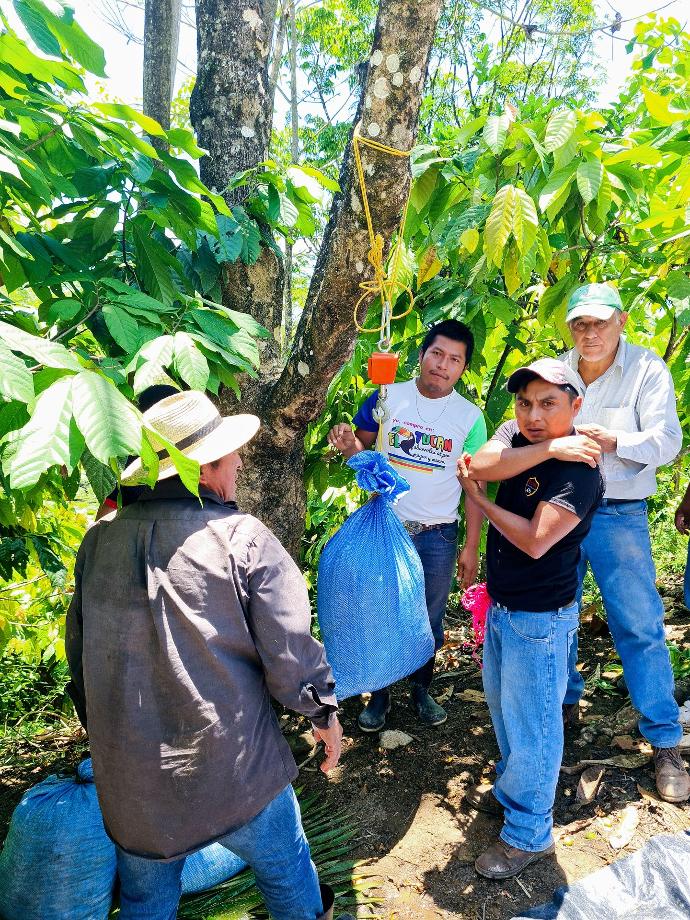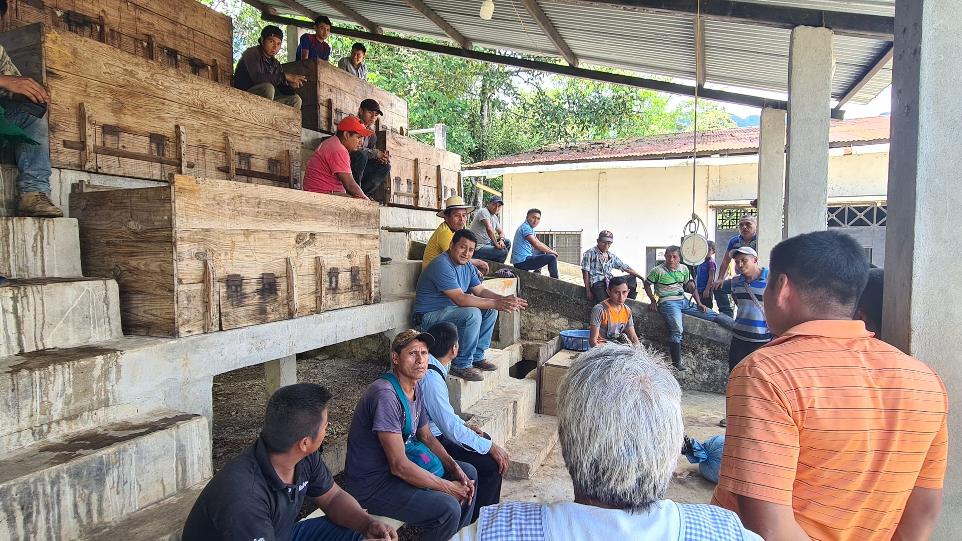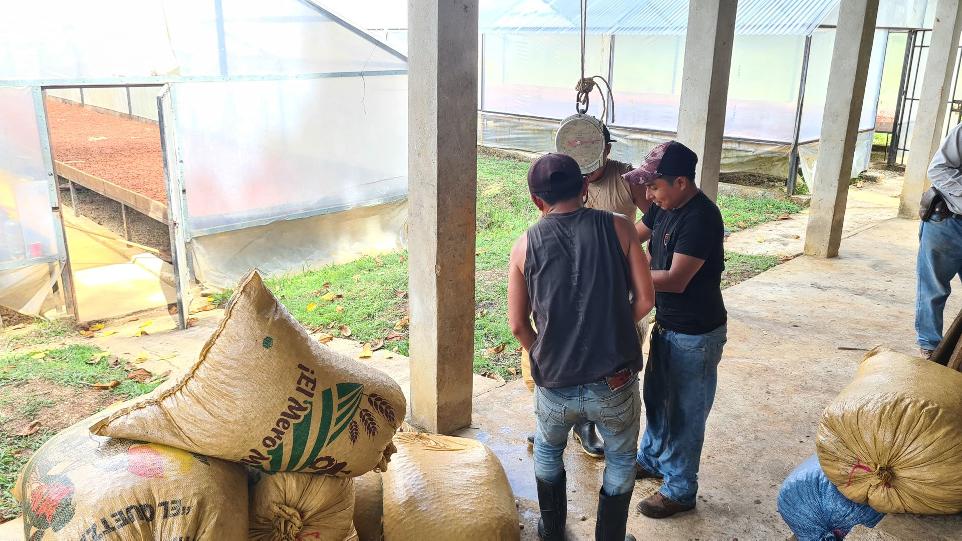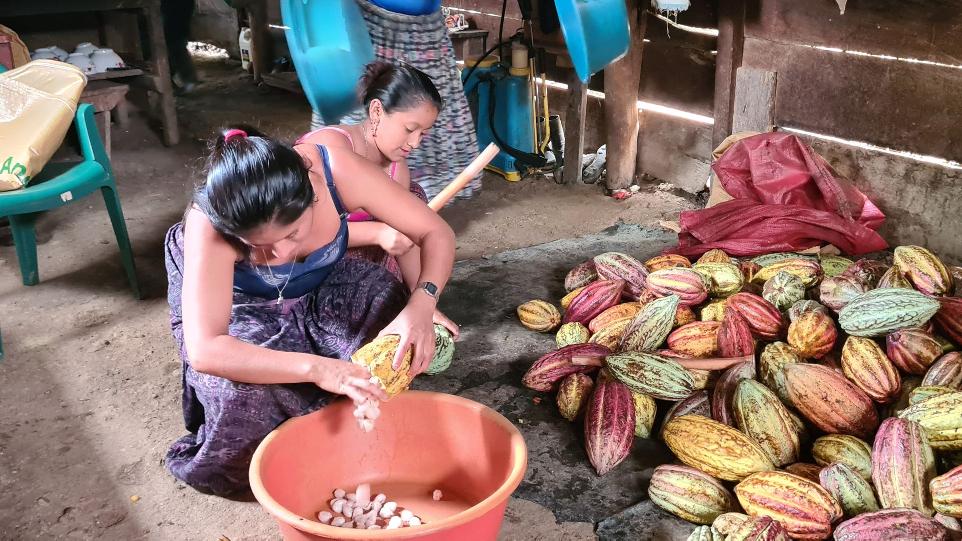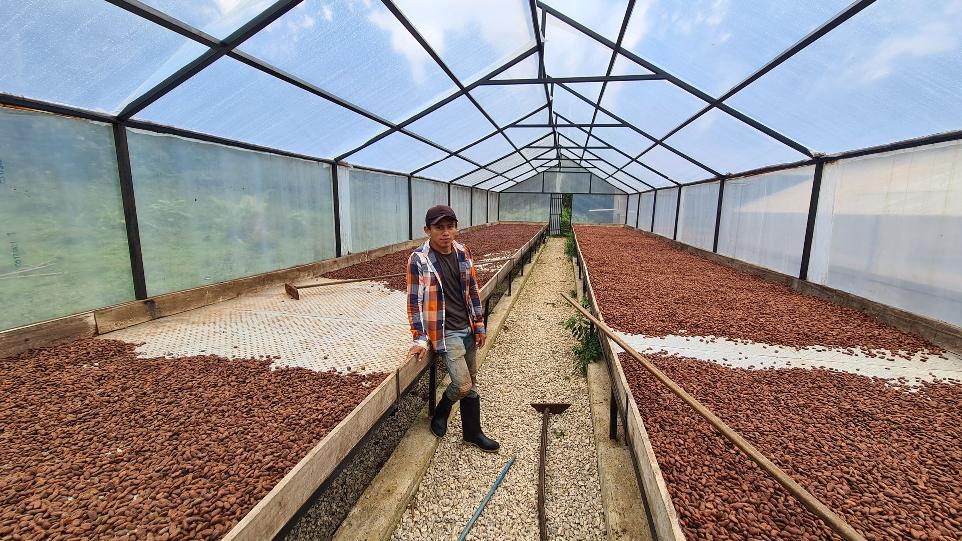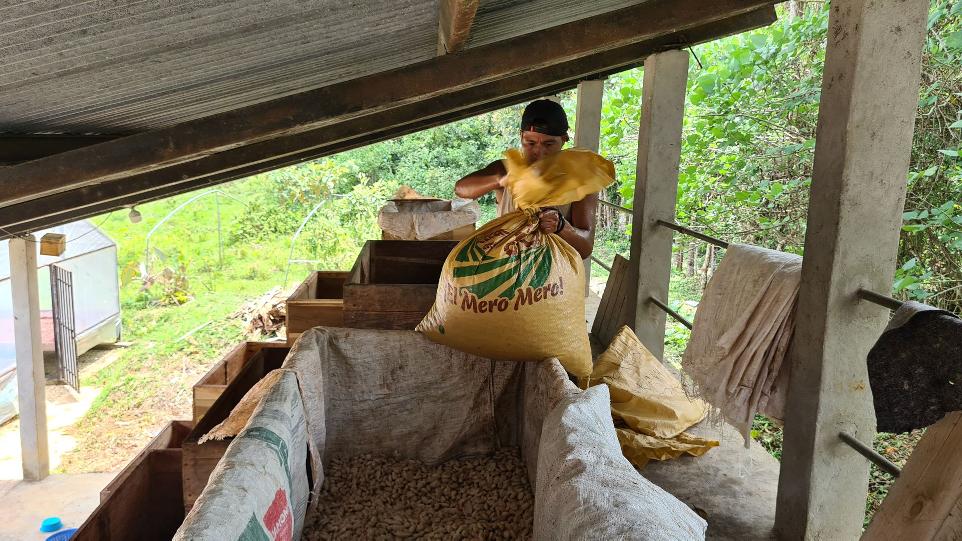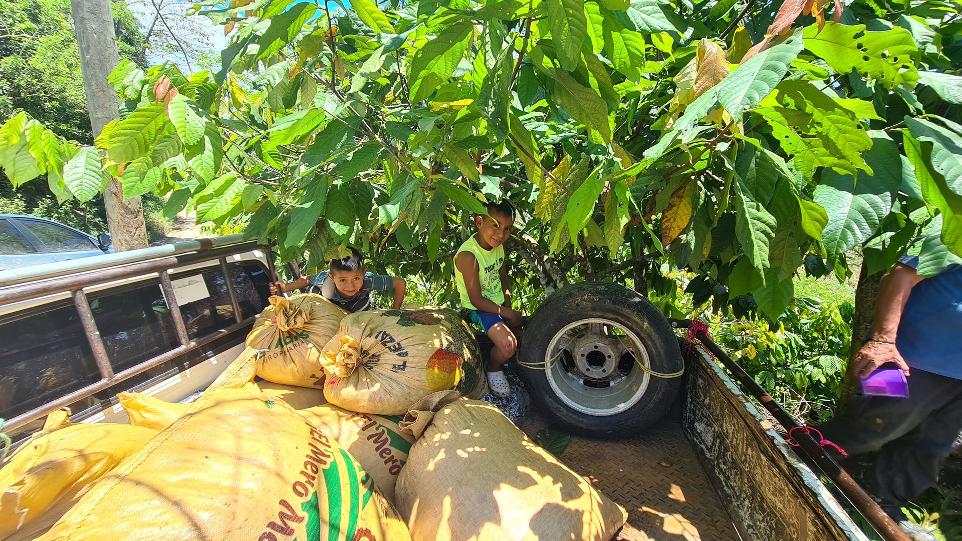Retribución a los Agricultores
Cahabon Origin
Cahabon is a small town in Alta Verapaz, it is known for its beautiful river that connects the town to the famous Semuc Champey Park. The area is filled with small-scale Q´eqchi´ farming families between mountains and beautiful views. Communities are collaborating, empowering each other, and giving a hand to their neighbors. This community culture has supported an abundant cacao production area.
The origin is supported by a local foundation and Dokeshi project which provides extra support in the fields, social initiatives such as a dentist program and direct trade with highest payments to farmers in the region.


¡Conoce a tus agricultores!
Genética: Mezcla de híbridos locales.
Perfil de sabor: Equilibrado, ligero amargor afrutado, suaves notas de vainilla y un toque cítrico.
Fermentación: 9 días en caja grande de madera. removido dos veces al día.
Medio ambiente : Pequeños pueblos en valles de montaña. Huertos jóvenes de bosques frutales, proximidad con muchas viviendas, rodeado de naturaleza salvaje.
Región : Alta Verapaz
Altitud: 300m
Tamaño del terreno: unos 52 000 m2 divididos en varias parcelas.
Árboles de cacao: unos 30.000
Especificidades: Bosque de cacao mezclado con pueblo Q'eqchi.
Propiedad: 60 familias Q'eqchis organizadas en cooperativa, administradas por un centro regenerativo.
Trabajadores: 10 trabajadores contratados para cosecha y mantenimiento. Paga 150Q/día. A los trabajadores se les ofrece acceso a los talleres 9 veces al año.
This cacao origin is originally grown in a food sovereignty program for the Q´eqchi´ community. The primary goal is for the farming families to provide nutritious meals for themselves and cacao is a surplus to the activities.
Some communities have switched to organic farming for over 15 years now. Most of the families are certified organic, others practice the same principles without reaching for certifications. One thing
is sure, the earth is abundant, diverse, and well cared for. The farmers are always keen to learn further skills to care for their land.
-
Genética: Mezcla de híbridos locales.
Perfil de sabor: Equilibrado, ligero amargor afrutado, suaves notas de vainilla y un toque cítrico.
Fermentación: 9 días en caja grande de madera. removido dos veces al día.
Medio ambiente : Pequeños pueblos en valles de montaña. Huertos jóvenes de bosques frutales, proximidad con muchas viviendas, rodeado de naturaleza salvaje.
Región : Alta Verapaz
Altitud: 300m
Tamaño del terreno: unos 52 000 m2 divididos en varias parcelas.
Árboles de cacao: unos 30.000
Especificidades: Bosque de cacao mezclado con pueblo Q'eqchi.
Propiedad: 60 familias Q'eqchis organizadas en cooperativa, administradas por un centro regenerativo.
Trabajadores: 10 trabajadores contratados para cosecha y mantenimiento. Paga 150Q/día. A los trabajadores se les ofrece acceso a los talleres 9 veces al año.-
Genetics : Blend of local hybrids.
Flavor profile : Balanced,
Fermentation : 7 days in large woden box.
Type of environnement : Small villages on mountain side valley. Young fruit forest gardens, proximity with many viviendas, surrounded by wilderness.
Region : Alta Verapaz
Altitude: 300m
Land Size : About 40+ hectares from a variety of families
Cacao Trees : Unknown
Specificities : Cacao forest mixed with Q'eqchi village.
Ownership : 54 Q'eqchi families organized in a cooperative, managed by a regenerative center.
-
Tamaño del Terreno
Altitud
Trabajadores
Descripción de la Granja
The farming communities are found in the parameters of the Cahabon town. Several families, each with a small piece of land, come together to produce and sell their cacao. In the past, they would sell their cacao to the ´Coyote´ of the region which would try to bargain at the lowest price, most often 1000Q for 100 lbs of dry cacao. Today, the communities have a much better price with social benefits with it. They grow the cacao with copal, canela, cardamon, citrus trees, corn, plantain and much more.
Concepto del Proyecto
The project started 30 years ago with a Swiss priest. Seeking to support the community, he found his way through agriculture. With the support of a foundation, he opened an agriculture school for food sovereignty. Cacao was a surplus for the community to make an income. The project focus on uniting the community between ancestral practices and the influence of the church. The nawales and Mayan history is represented through arts and educational material. Most farming communities continued to practices Mayan rituals inside their farming activities.
Thank you Cahabon Farm!
Haz una donación
Give Back to Farmer es una oportunidad para valorar y reconocer el arduo trabajo de las comunidades agrícolas. Esta donación se destinará a un proyecto comunitario co-creado con los agricultores de Ullulawl para apoyar una causa social o ambiental en la comunidad. Al final de cada año, nos reuniremos con los agricultores con la donación total para decidir el proyecto a financiar.
